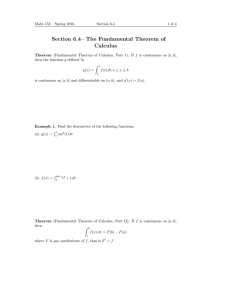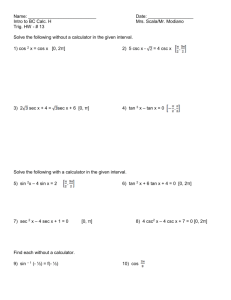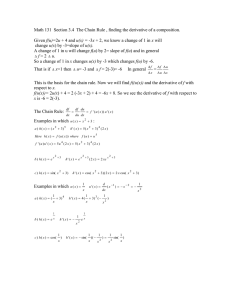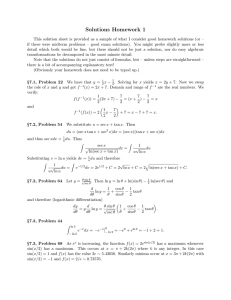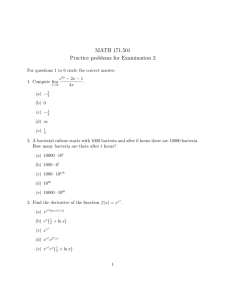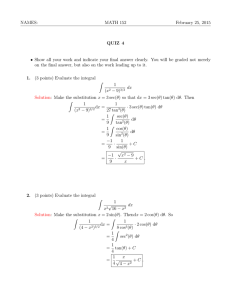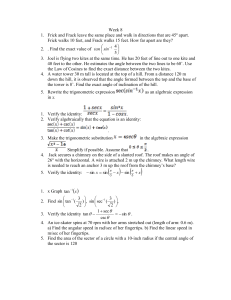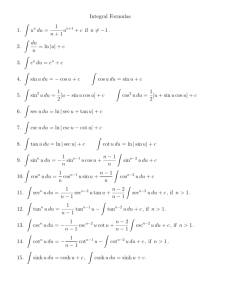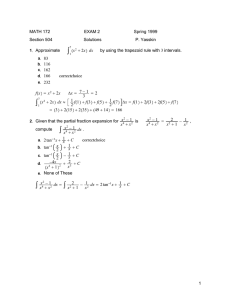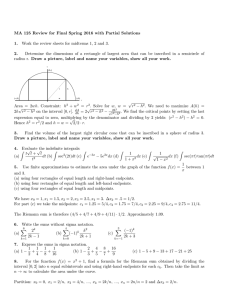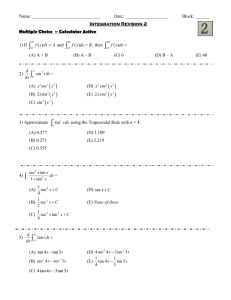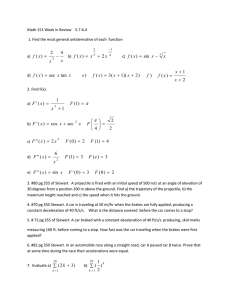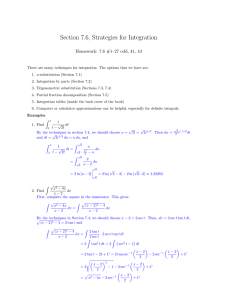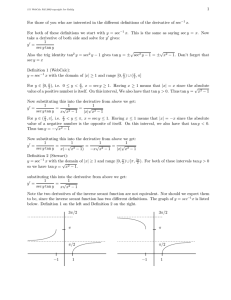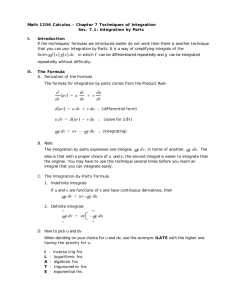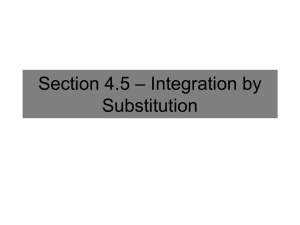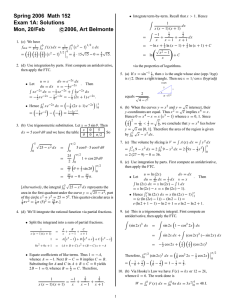5.4 The Fundamental Theorem of Calculus 321 Since both F and G
advertisement
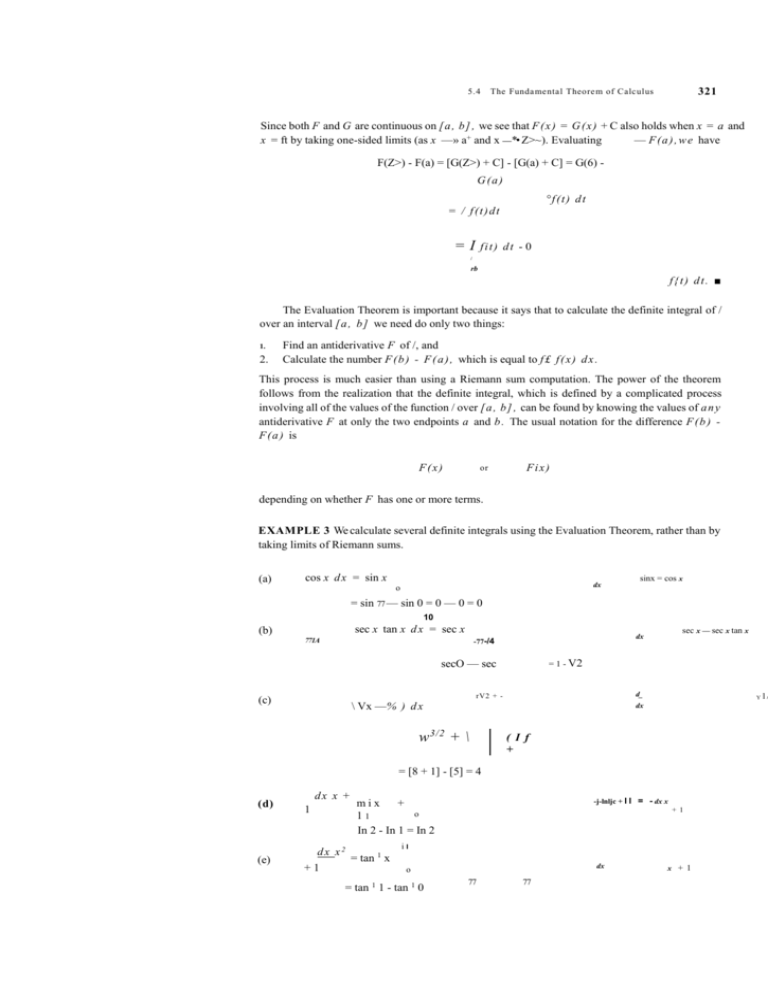
5.4
321
The Funda mental Theore m of Calculus
Since both F and G are continuous on [a , b] , we see that F (x ) = G (x ) + C also holds when x = a and
x = ft by taking one-sided limits (as x —» a+ and x —*• Z>~). Evaluating
— F (a ) , w e have
F(Z>) - F(a) = [G(Z>) + C] - [G(a) + C] = G(6) G (a )
° f (t ) d t
= / f (t ) d t
=I
fit) dt - 0
/
rb
f{t) dt. ■
The Evaluation Theorem is important because it says that to calculate the definite integral of /
over an interval [a , b] we need do only two things:
1.
2.
Find an antiderivative F of /, and
Calculate the number F (b ) - F ( a ) , which is equal to f £ f ( x ) d x .
This process is much easier than using a Riemann sum computation. The power of the theorem
follows from the realization that the definite integral, which is defined by a complicated process
involving all of the values of the function / over [a , b] , can be found by knowing the values of a n y
antiderivative F at only the two endpoints a and b . The usual notation for the difference F (b ) F (a ) is
F(x)
or
Fix)
depending on whether F has one or more terms.
EXAMPLE 3 We calculate several definite integrals using the Evaluation Theorem, rather than by
taking limits of Riemann sums.
(a)
cos x d x = sin x
dx
o
sinx = cos x
= sin 77 — sin 0 = 0 — 0 = 0
10
sec x tan x d x = sec x
(b)
771A
secO — sec
= 1 - V2
d_
rV2 + -
(c)
sec x — sec x tan x
dx
-77-/4
\ Vx —% ) d x
Y
dx
w 3/2 + \
( I f
+
= [8 + 1] - [5] = 4
dx x +
-j-lnljc + I I = - dx x
mix
+
o
11
In 2 - In 1 = In 2
(d)
1
(e)
dx x2
= tan 1 x
+1
1
+ 1
iI
dx
o
1
= tan 1 - tan 0
77
77
x + 1
l/
![Math 131 Practice Exam 3 on [ -1, 4].](http://s2.studylib.net/store/data/010538103_1-a851ef52d08f89241a99ddd9d94bbb2a-300x300.png)
